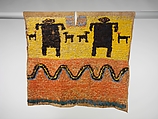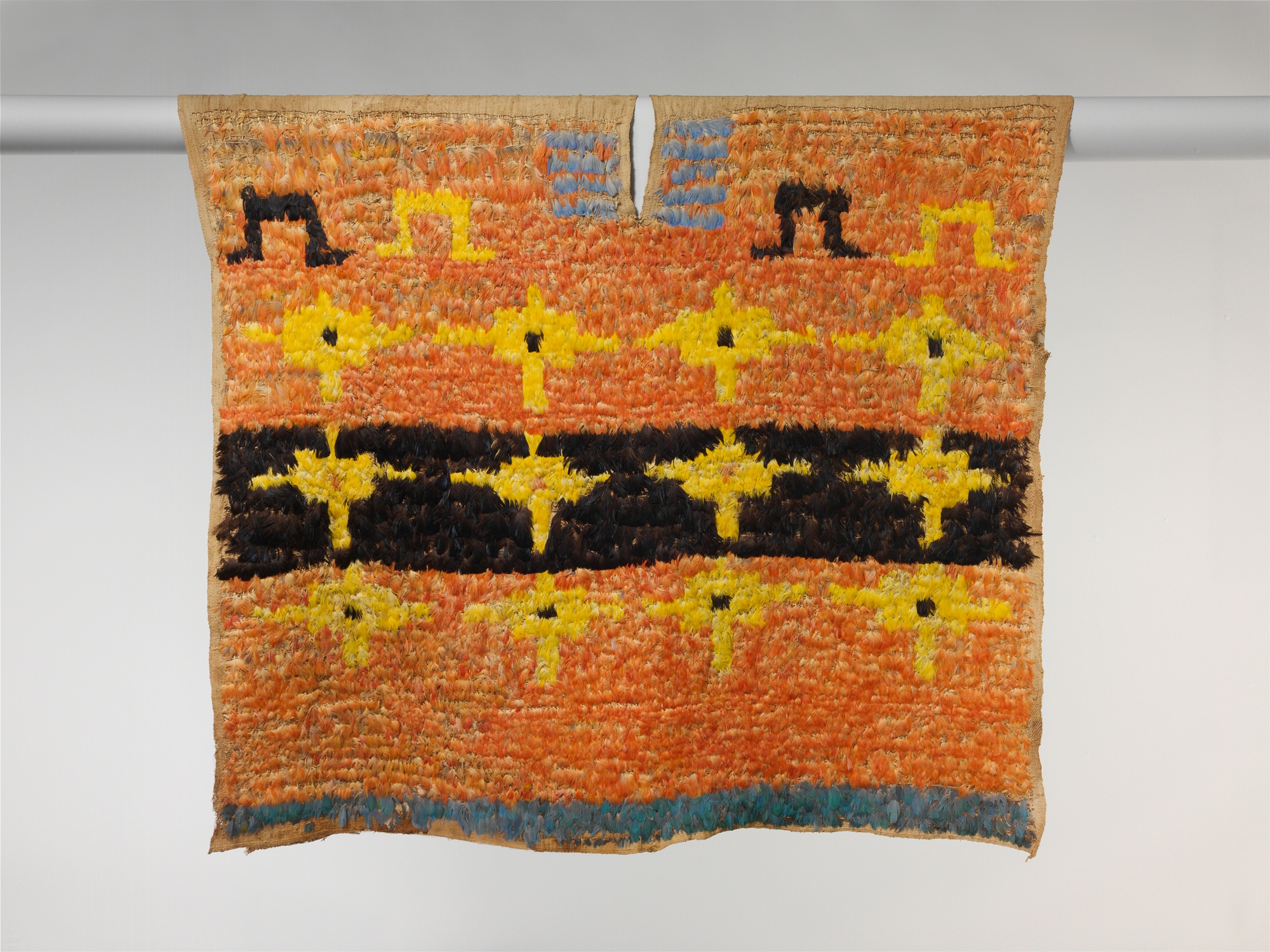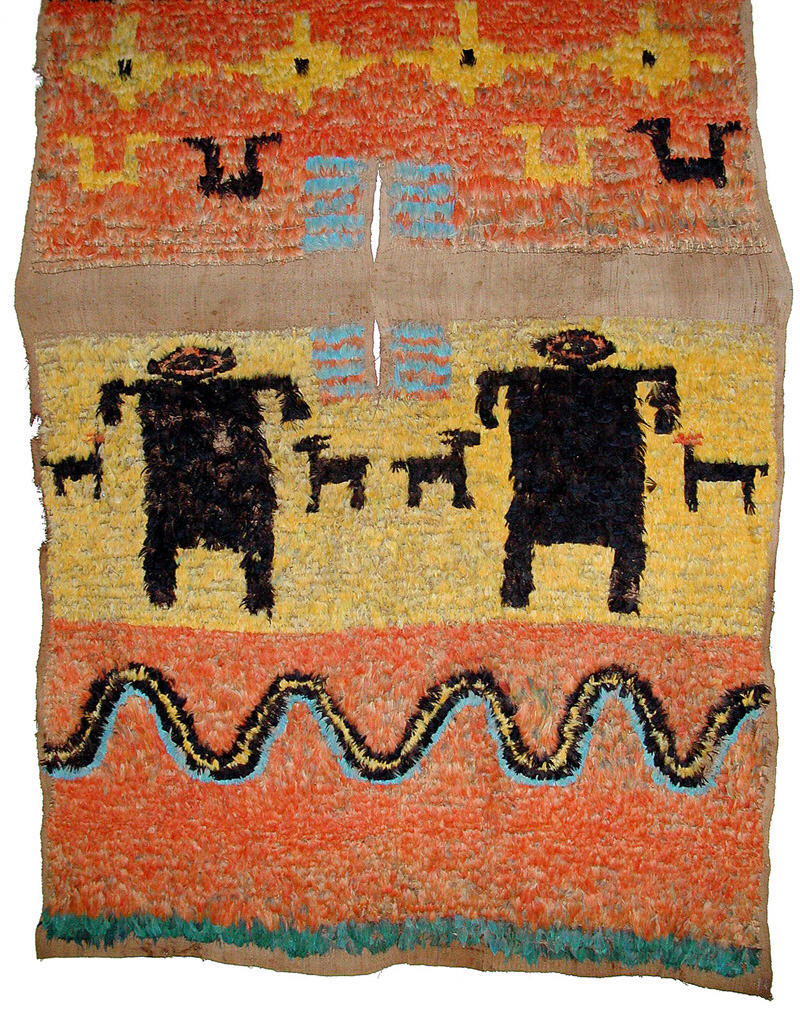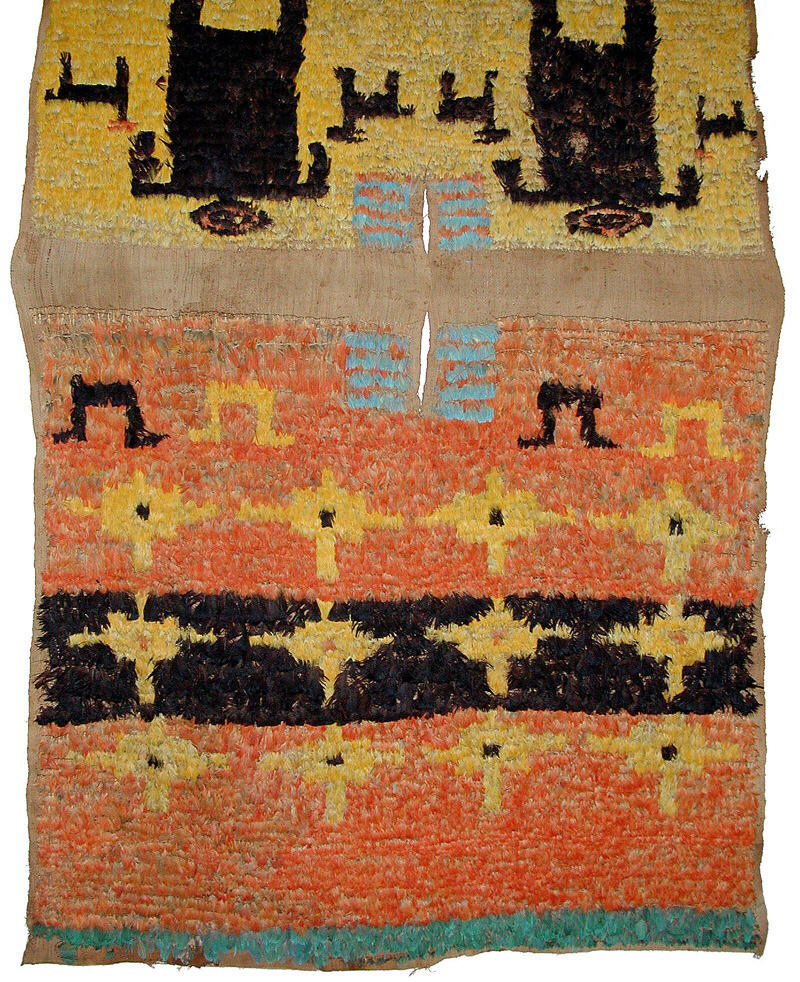Feathered Tabard
Not on view
Colorful feathers, particularly those of tropical rainforest birds, were among the most highly valued luxury materials in many cultures throughout the ancient Americas. In Peru their use in ritual contexts has been dated to as early as the second millennium B.C.; their primary use was, however, to embellish elite apparel: headdresses, sashes, ear and chest ornaments, and even full-size tabards (open-sided tunics) as seen here. Ancient featherworkers used several techniques to create dense feather mosaic on different types of surfaces. Covering cloth with feather mosaic was a complex, multistep process that required knotting literally thousands of small feathers on to strings; the feather strings were then stitched to the foundation fabric.
The strong, basic color and geometric format of most of ancient Peruvian feather textiles relate to certain contemporary visual idioms and thus appeal to many who have little knowledge of their origin. In the mid-1950s, feathered textiles of various types and sizes, from extremely large to very small, began appearing on the international art market in some numbers. This large feathered tabard was a gift to the Rockefeller collection from the New York Precolumbian art dealer John Wise. It was first exhibited in 1958 in the Museum of Primitive Art's <em>Selected Works Four, Art of Ancient Peru</em>.
Due to rights restrictions, this image cannot be enlarged, viewed at full screen, or downloaded.
This artwork is meant to be viewed from right to left. Scroll left to view more.





